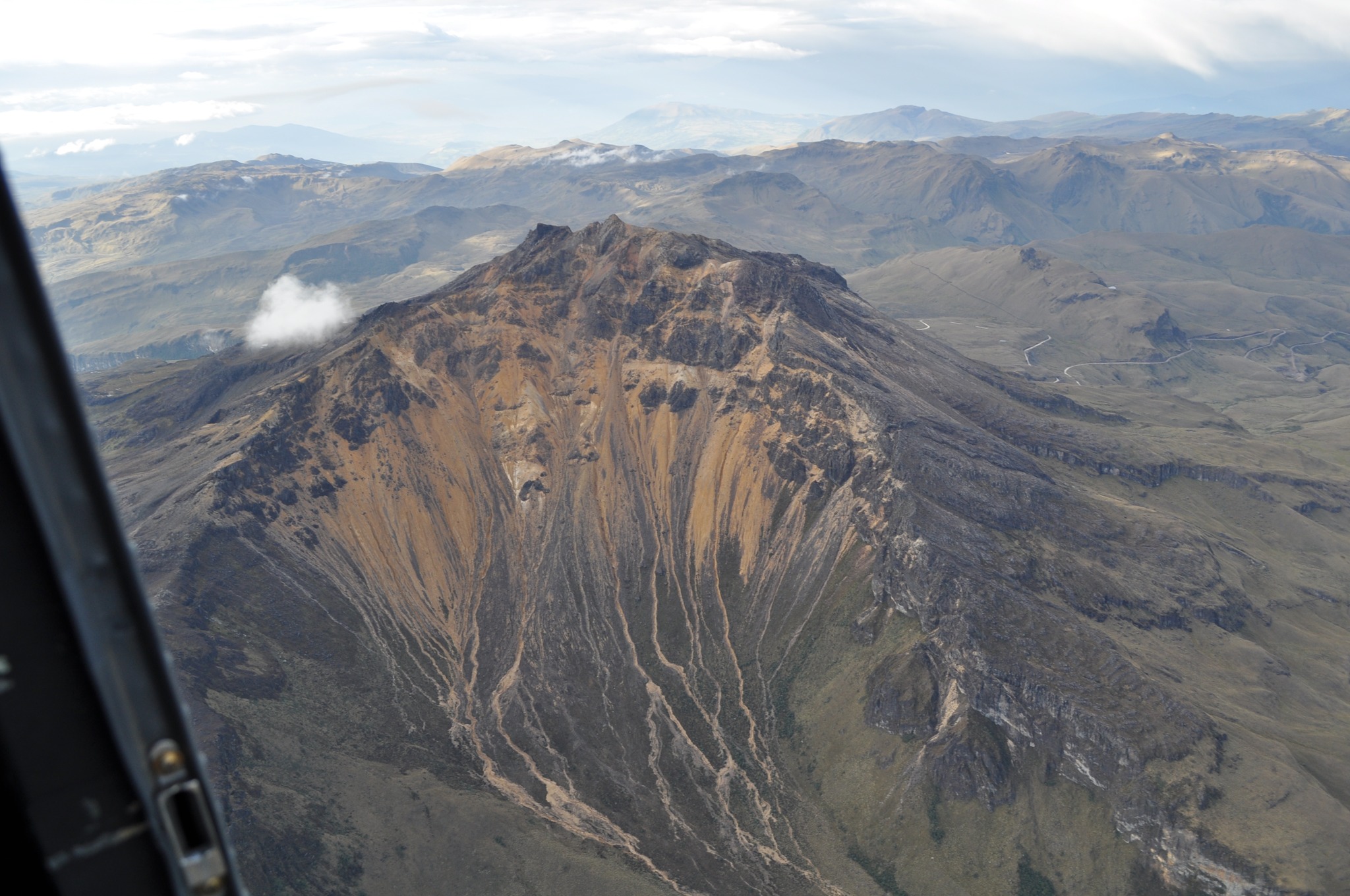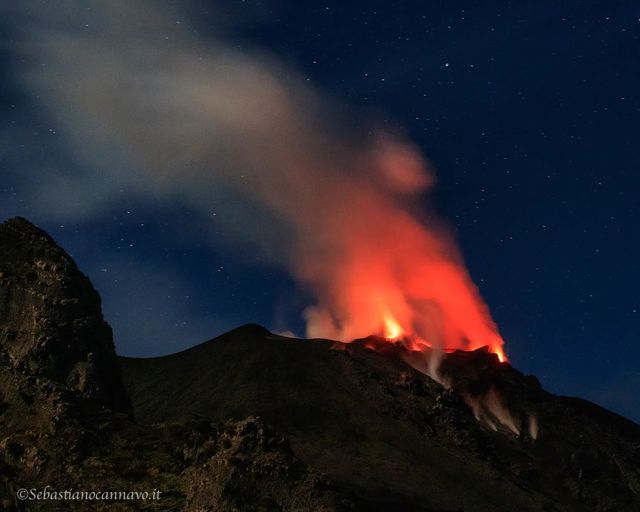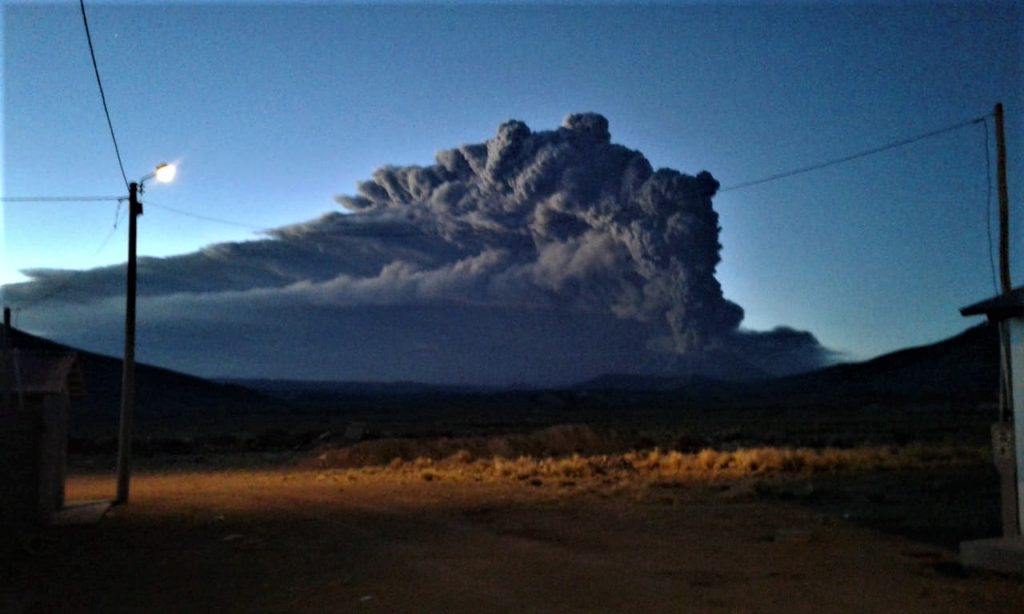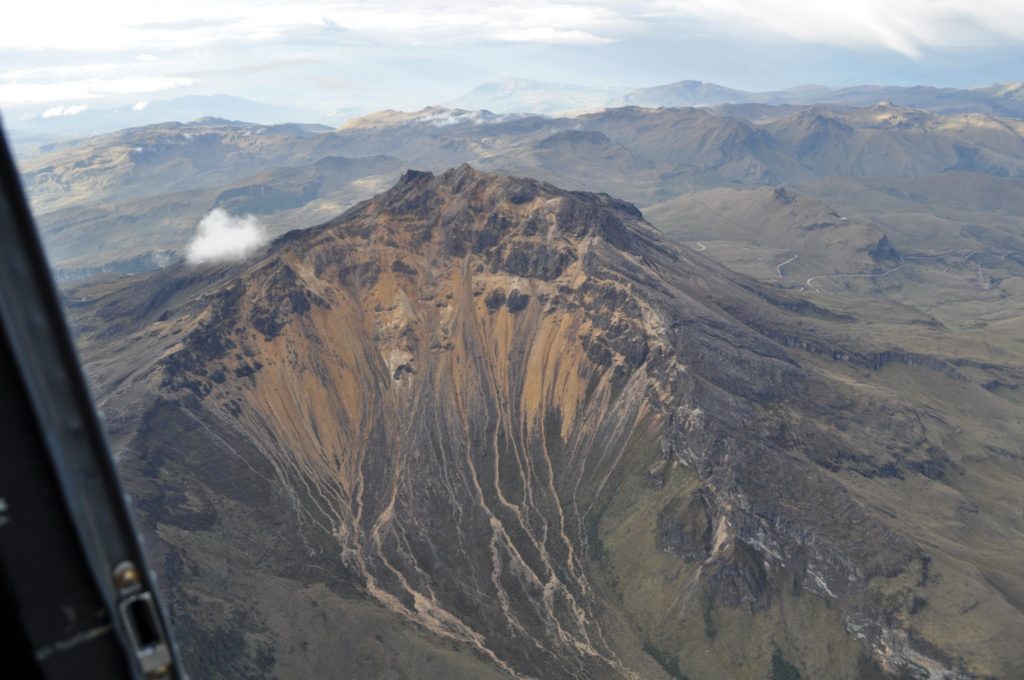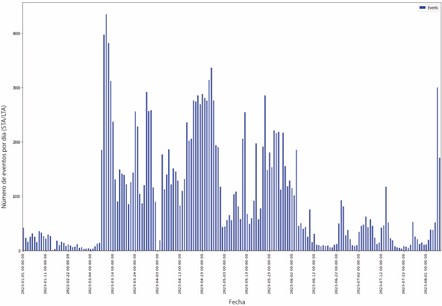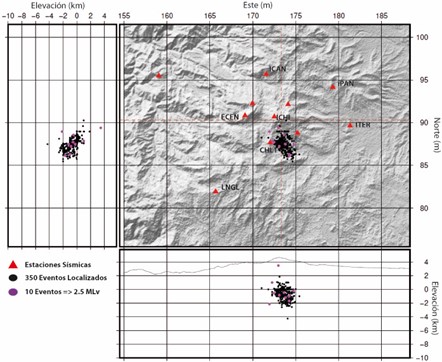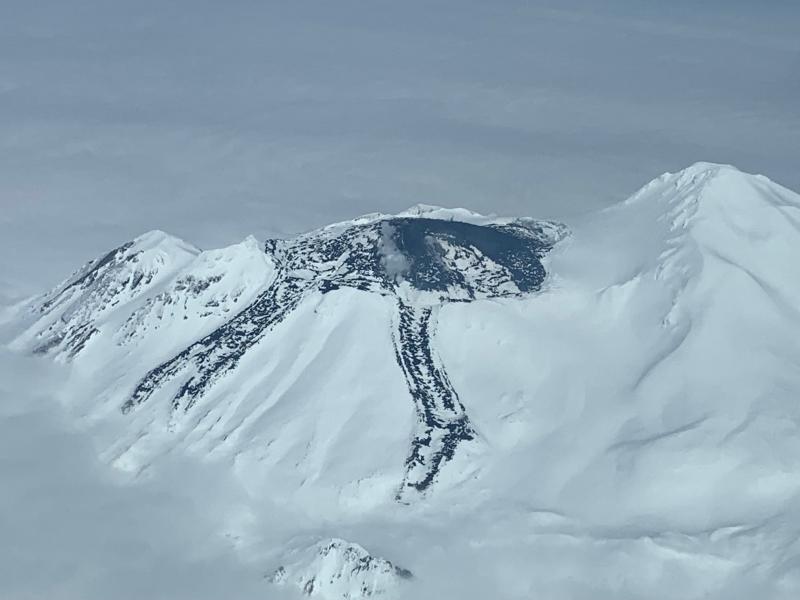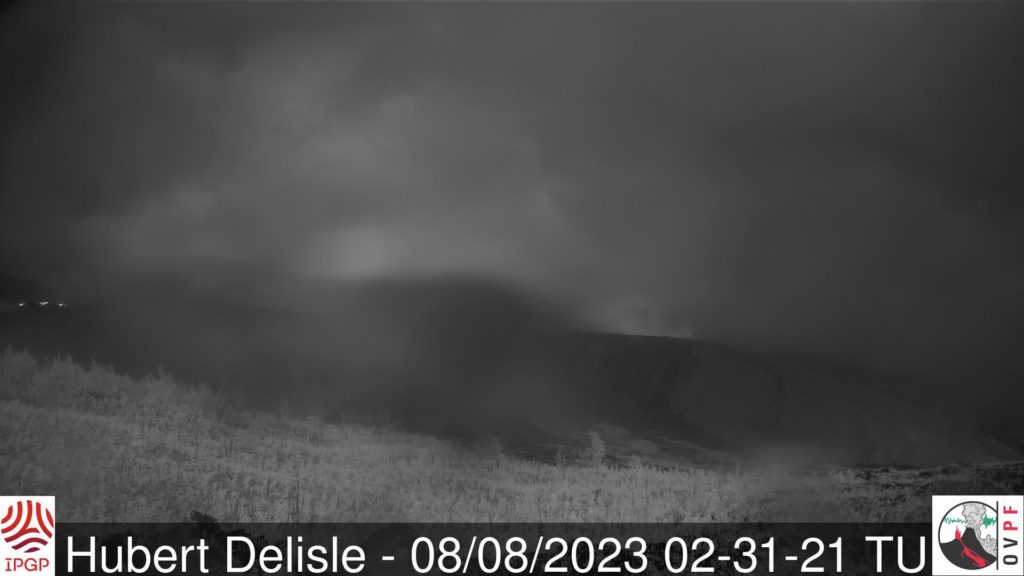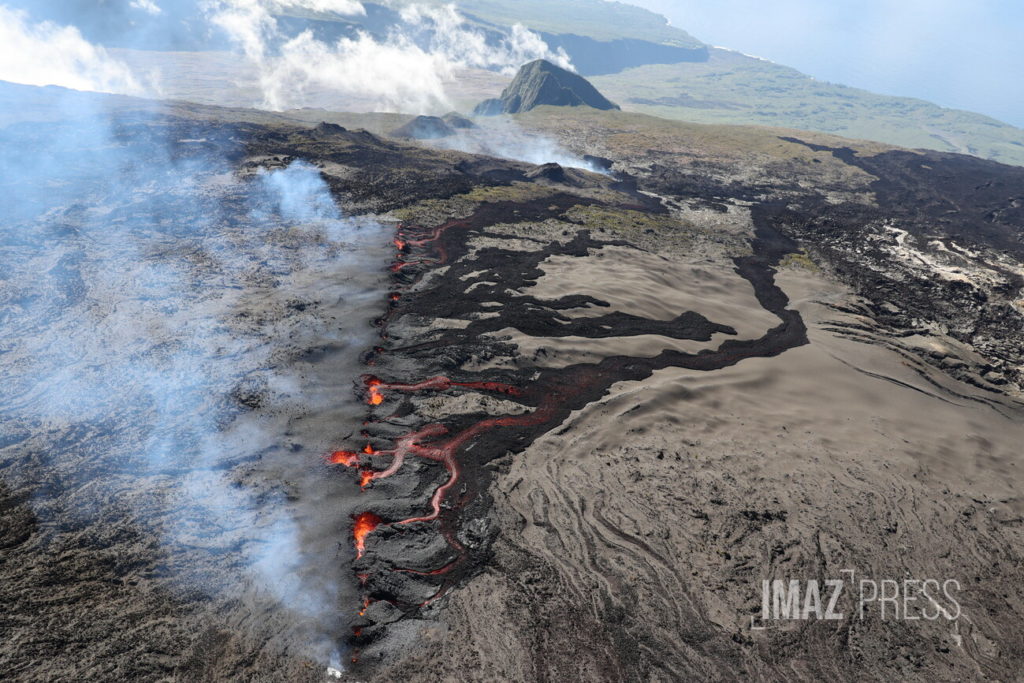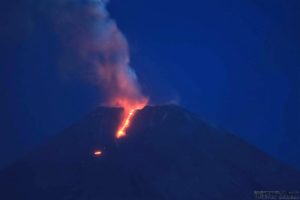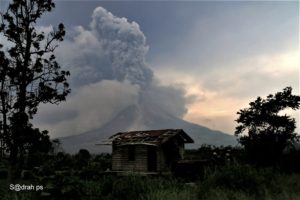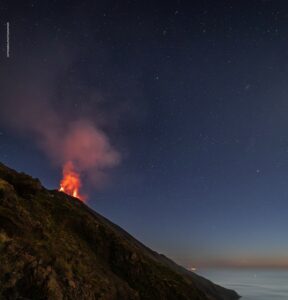August 08 , 2023.
Italy , Stromboli :
Statement on Stromboli activity, August 06, 2023, 20:47 (18:47 UTC).
The National Institute of Geophysics and Volcanology, Osservatorio Etneo, communicates that the intense spattering activity of the North Crater area, produced, from about 18:00 UTC, a new overflow of lava which, for the moment , remains confined to the upper part of the Sciara del Fuoco. The phenomenon was observed by surveillance cameras and is still ongoing at the time of this press release.
From the seismic point of view, the average amplitude of the volcanic tremor is, currently, in the average level. There are no significant variations in the rate of occurrence and in the amplitude of the blast quakes.
No significant variation was found in the data from the ground deformation monitoring networks.
Statement on Stromboli activity, August 07, 2023, 08:52 (06:52 UTC).
The National Institute of Geophysics and Volcanology, Osservatorio Etneo, communicates that from the surveillance cameras it was possible to observe that during the night the splashing of the North crater area gradually decreased in intensity and that the overflow fueled by this activity has stopped and is currently cooling. Ordinary Strombolian activity remains in both the North Zone and the Center-South Crater Zone, with occasional relapse of products outside the crater terrace.
From the seismic point of view, the average amplitude of the volcanic tremor is, currently, in the average level. There are no significant variations in the rate of occurrence and in the amplitude of the explosion tremors.
We note a modest impulsive shift in the N185E component of the TDF tilt station that occurred around 2120 GMT last night. The GNSS network does not show significant variations.
Further updates will be communicated soon
Source : INGV.
Photo : Sebastiano Cannavo / Stromboli Stati d’animo. ( archive
Peru , Ubinas :
Analysis period: July 31, 2023 – August 06, 2023. Arequipa, August 06, 2023.
Alert level: ORANGE
The Geophysical Institute of Peru (IGP) reports that the eruptive processes of the Ubinas volcano (Moquegua region) maintain moderate levels. During this period, 4 volcanic explosions as well as emissions of ballistic blocks, ash and gas which reached up to 5400 m above the summit of the volcano were recorded. For this, it is suggested to the authorities to maintain the volcanic alert level at the Orange level.
During the analysis period, the occurrence of 115 volcano-tectonic (VT) type earthquakes was detected, associated with rock rupture processes that occur inside the volcano. In addition, 124 long-period (LP) type seismic signals were recorded, associated with the movements of volcanic fluids (gas and magma), with a maximum energy of 2.8 Megajoules. Finally, it was identified a duration of 6 hours / day of seismic recordings in relation to ash emissions with a maximum of 9 hours, recorded on August 2 and 3. During this period, 4 volcanic explosions were recorded.
Surveillance cameras identified volcanic explosions with emissions of ballistic blocks, columns of gas and ash that reached heights of 5400 m above the summit of the volcano, which were dispersed mainly to the western sectors. , Southwest, East, Southeast and South of the Ubinas volcano with a radius of 30 km. Ash falls were reported in the districts of Ubinas and Chojata. On the other hand, the monitoring of the deformation of the volcanic structure, show variations of less than 7 mm of displacement (slight tendency to inflation). Satellite monitoring showed two 2 MW thermal anomalies in the Ubinas crater.
RECOMMENDATIONS
• Maintain Volcanic Alert Level at ORANGE.
Source : Cenvul
Photo :Radio Melodía AM
Ecuador , Chiles / Cerro Negro :
Seismic activity in the volcanic complex of Chiles – Cerro Negro
summary
Since August 5, 2023, a new swarm of earthquakes has been recorded in the area of the Chiles – Cerro Negro volcanic complex (CVCCN), on the Ecuadorian-Colombian border. The main earthquakes in this new impulse occurred on August 6 at 00:04 (TL), which reached a magnitude of 3.4 MLv (local magnitude) and on August 7 at 19:04 with a magnitude of 3 .7 MLv, events which, according to reports received, were felt in the region.
This activity is a continuation of the seismicity recorded this year since March and which experienced a decline in June, representing approximately 176,000 events. It should be mentioned that this area since the first quarter of 2013 has experienced seismic swarms with a large number of mostly small seismic events. On previous occasions, these swarms have therefore been followed by earthquakes of greater magnitude, the occurrence of earthquakes with a magnitude greater than 5 Mw (magnitude moment) associated with these pulses of high seismic activity do not is not excluded, as happened on July 25, 2022 with an earthquake of magnitude 5.6 Mw. Moderate events like these can damage homes and infrastructure near the epicenter.
This new increase in seismicity implies a change in the trend of the internal activity of the volcano, classifying it as ascending.
Seismicity
In 2023, the CVCCN recorded an increase in activity since March 10, 2023. Figure 1 shows the bar graph with the number of daily events, where it can be seen that the 4000 events per day was exceeded at the start of March swarm. This swarm lasted until early June 2023, noting that there was a subsequent decrease in the number of events until August 5, 2023, when the start of a new pulse of activity is clearly marked, reaching 3000 events in one day.
This seismicity is characterized by volcano-tectonic earthquakes (VT) which are related to the fracture of rocks due to the internal pressures of the volcano, however, the seismic monitoring networks of Ecuador and Colombia have also detected the presence of long period (LP) and very long period (VLP) events, although in much smaller numbers, which are related to the timing of fluids in the hydrothermal system.
Between August 5 and 6, with the SixComP5 processing system, a total of 329 events were located. Figure 2 shows that the seismicity is concentrated on the southern flank of the Chiles volcano, at shallow depths between 2 km below sea level and 1 km above sea level, which is similar to that observed during the months of March, April and May of this year. A total of 10 events with a magnitude equal to or greater than 2.5 MLv were counted; of these, the largest earthquakes occurred on August 6 at 12:04 a.m. ( TL ), with a magnitude of 3.4 ML and on August 7 at 7:04 p.m. with a magnitude of 3.7 MLv , events which, according to reports received, were felt in the region.
The events associated with the movement of fluids would represent activity at the hydrothermal level, without this implying the possibility of an eruption in the short and medium term.
In addition, the probability that events with a magnitude greater than 5 Mw are recorded in these seismic swarms is not excluded, which, depending on the distance from the epicenter, can damage houses and infrastructure, especially those that have already been affected by past earthquakes.
The Geophysical Institute of the École Nationale Polytechnique will continue to monitor the evolution of this new seismic swarm and will communicate relevant information on this activity.
Findings
Since August 5, 2023, seismic monitoring network stations in Ecuador and Colombia have recorded a new seismic swarm in the Chiles – Cerro Negro volcanic complex, again marking an upward trend.
The activity is characterized by fracture events (VT), which exceed 3000 events per day, however, these earthquakes are of a magnitude generally less than 2.5 MLv. Two earthquakes exceeded this magnitude reaching 3.4 and 3.7 MLv.
Seismicity is concentrated on the southern flank of Chiles Volcano at shallow depth.
Source : IGEPN
Photos : SGC , IGEPN
Alaska , Great Sitkin :
52°4’35 » N 176°6’39 » W,
Summit Elevation 5709 ft (1740 m)
Current Volcano Alert Level: WATCH
Current Aviation Color Code: ORANGE
Slow eruption of lava continues at Great Sitkin Volcano, where it is producing a thick lava flow within the summit crater. The eastern lobe of this flow continues to advance. Earthquake activity remains slightly elevated over the past day. Clouds obscured views of the volcano by satellite, but clear web camera views showed weak steaming from the summit.
Photograph of Great Sitkin Volcano, showing lava flows that have been forming during the eruption that started in May 2021. Recent lava effusion has formed the relatively snow-free lava lobes covering the right (eastern) side of the summit crater. Photo by Dave Clum, Alaska Airlines pilot, May 20, 2023.
The current lava flow at Great Sitkin Volcano began erupting in July 2021. No explosive events have occurred since a single event in May 2021.
The volcano is monitored by local seismic and infrasound sensors, web cameras, regional infrasound and lightning networks, and satellite data.
Source : AVO
Photo : Clum, Dave.
La Réunion , Piton de la Fournaise :
Press release from the Paris Institute of Earth Physics, Piton de la Fournaise Volcanological Observatory, August 08, 2023 – 09:30 – 05:30 UTC
Ongoing eruption
The eruption which began on July 02, 2023, around 08:30 local time continues. The amplitude of the volcanic tremor (indicator of an emission of lava and gas on the surface) remains very low compared to the start of the eruption, while having very gradually and regularly decreased during the last week.
Shots towards the summit of the volcano allowing to visualize in the left part of the image, the fronts of the flows active on 08/08/2023 at 06:31 local time (02:31 UTC) from the OVPF-IPGP webcam located in the center of Grand Brûlé (©OVPF-IPGP)
Given the persistent bad weather conditions on site for several days, no estimate of the lava flows by satellite method could be made over the last 24 hours. Only a small partial clearing that occurred at the end of last night allowed visual feedback confirming the persistence of an active lava flow front in the Grandes Pentes. This thinning did not allow the evaluation of the still active flow zones. In addition, no visual return of the eruptive cone could be obtained during the last 24 hours.
The activity most likely continues with weak projections of lava at the level of the eruptive cone as well as a flow of lava in tunnels closest to the eruptive vent.
Low inflation of the summit area has been recorded since mid-July, indicating a re-pressurization of the volcano’s feeding system centered under the summit area with possible transfer of deep magma to the latter, then feeding the eruption.
The seismic activity recorded under the summit zone remains weak. Thus during the last 24 hours, a single superficial volcano-tectonic earthquake has been recorded. This low seismic activity leads to a low risk of the appearance of a new crack and / or collapse in the crater, but does not allow to exclude it as shown by the continuation of the summit inflation and the fluctuations in the amplitude of the tremor which are regularly observed.
Alert level: Alert 2-1 (eruption in the Enclosure without any particular threat to the safety of people, property or the environment).
Source : OVPF
Photos : OVPF , sly/rb/www.imazpress.com ( archive )

